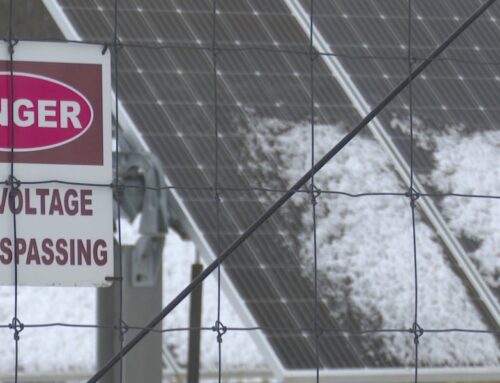Sony Ventures Says These Trends Are Shaping Climate Tech Investment
January 2, 2025
According to the 2024 Carbon & Emissions Tech Report from PitchBook, climate tech deals grew 37.9% in Q1. The May 2024 report says infrastructure, industry and renewable battery deals were hot commodities, and median pre-money valuations were rising across the board.
However, a December PWC report, The State of Climate Tech, says that in the 12 months through September 2024, capital flows and transaction volume continued to trend downwards, dropping below levels recorded in 2019. The report also noted that the distribution of climate tech investment across sectors has changed and that during the first three quarters of 2024, energy-related startups took in a slightly greater share of climate tech funding—nearly 35%—than they did in 2023 (30%).
According to Austin Noronha, Managing Director-US of Sony Ventures, climate tech was less impacted than other sectors in the venture downturn of 2023 and 2024. “Climate tech is one of the technology sectors that attracts the highest proportion of corporate (CVC) investments,” he said.
“There is also a very active ecosystem of dedicated climate tech funds, especially at the Seed and Series A stages,” said Noronha. “Today, a significant number of climate tech funds attract corporate/strategic LPs because the collaboration can bring concrete value for the portfolio companies in terms of accelerating their go-to-market or scaling up their real-world deployments and help de-risk such early-stage investment for the CVCs who can tap into deeper domain knowledge.”
Noronha believes there is also an increasing proportion of “generalist” deep tech funds placing bets on climate tech startups. He says this is because the total addressable market is large, and climate use cases enable diversification of the market applications for semiconductors, AI models, or materials startups.
Sony Ventures Senior Investment Director Ludovic Copéré says he believes that climate tech was less impacted because investors, especially funds dedicated to or with a broad thesis in that domain, tend to be aware and willing to underwrite the long sales cycles towards commercialization of the technology—more than pure software or SaaS investors.
“Additionally, many of the core underlying technologies of climate tech startups also provide economic benefits such as cost reduction, industrial process yield improvement, reduction of energy consumption or upcycling of byproducts that would otherwise go to waste,” said Copéré in an email interview. “There is, in many cases, a motivation that goes beyond the pure environmental protection angle.”
Large language models in climate tech
Copéré says large foundational models move beyond digital content into touching the physical world, making it especially attractive for potential investments.
“Up until now, the main focus of large language models (LLM) has been to generate “bits” either text, images or videos, based on digital content training data,” he said. “It is exciting to see some initiatives to generate physical phenomena – from hyper-localized sensor prediction to Earth-scale weather or ecological models as the next wave of modelling beyond the traditionally siloed simulations running on dedicated high-performance computing.”
“One of the key benefits of GenAI/LLM in this context is to accelerate the R&D cycles and allow for more iterations at higher speed and lower cost as less dependent in its initial phase on costly lab experiments,” said Copéré. “This relates to climate tech if we consider the ability to generate novel chemistries for batteries, such as electrolyte in particular, novel blending of plant-based ingredients for better tasting food with a closer texture to their animal or farmed equivalent, etc.,”
“We’re starting to see young companies combining next-generation sensing with novel physical AI models that help shortcut the identification, formulation and blending of novel compounds – whether it be battery chemistries, non-petroleum-based materials or weather forecast models,” said Copéré.
“Because of this, there are exciting opportunities to adapt and apply the software mindset to those sectors so as to iterate more quickly and efficiently around those fundamental building blocks,” he added.
Climate tech and biomaterials
Additionally, Copéré says the continued evolution in biomaterials is making these investments an increasingly realistic, manufacturable and practical alternative to legacy petroleum-based ones.
“For instance, a Sony Innovation Fund portfolio company, Cruz Foam, has developed a fully home-compostable packaging material alternative to foam/EPS,” said Copéré. “This has made great strides in enabling manufacturability with existing equipment, higher yields and a price point which makes it attractive for applications such as food/beverage, luxury goods and electronics devices/appliances packaging.”
And the biodegradable packaging market is growing. Papkot, a French startup, has developed a proprietary ceramic coating technology that converts paper into a high-performance biodegradable packaging material to eliminate the need for plastic, fluorine and other harmful chemicals and Spanish startup futuralga upcycles macroalgae /seaweed into disposable, multi-form packaging to replaces traditional polystyrene tray packaging used for carrying fruits and vegetables.
Ukrainian startup S.Lab has a production line in Spain to scale biodegradable packaging made from mycelium and agricultural waste.
The energy demand for climate tech
“There is immense inertia in the energy grid due to its old age and the vastly complex and costly nature of upgrading it,” said Copéré. “It is likely not realistic to only consider renewable energy generation, but rather implement technologies that can either lower or shift the energy consumption at the edge.”
“So when thinking about what makes energy delivery and efficiency solutions critical to the future of this sector, there is a surging demand for high-performance computing, AI, and LLMs,” said Copéré. “With the advent of exaflop-level technology, the energy required to train and operate these advanced models is skyrocketing, creating challenges and opportunities across the technology ecosystem.”
Copéré says innovations like silicon photonics, advanced chip design, and intelligent power management systems are becoming essential to balancing performance with energy efficiency. “The companies that can develop solutions to optimize energy usage—whether through next-generation chips or flexible energy systems—will have a significant competitive edge.”
Copéré cites two of Sony Venture’s portfolio companies in technology that can lower or shift energy consumption at the edge: Flower, a Swedish startup that offers a fully automated energy trading and optimization platform, and elleThermo, a Japanese early-stage startup that’s developing a way to harness semiconductor components/chipsets’ heat generation and convert that into electric power.
“Efficient power delivery isn’t just a technical necessity; it’s a strategic imperative,” said Copéré. “Investments in these areas will enable AI to scale sustainably, supporting both long-term growth and the transition toward a cleaner, more resilient energy future.”
Search
RECENT PRESS RELEASES
Related Post


